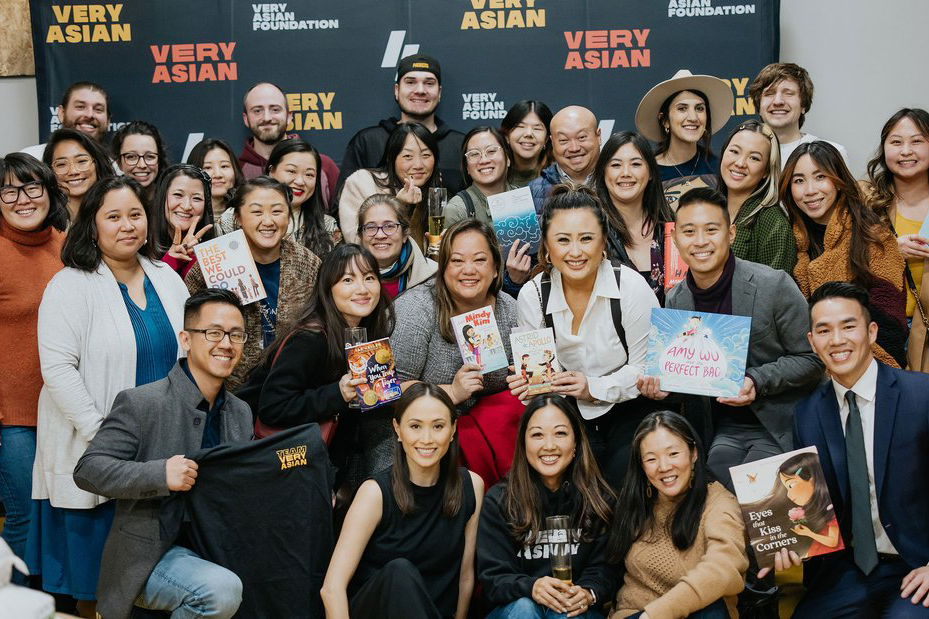During the month of May, we celebrate Asian American, Native Hawaiian, and Pacific Islander (AANHPI) Heritage Month, to commemorate the beginning of Japanese immigration to the United States on May 7, 1843, and to mark the anniversary of the completion of the transcontinental railroad on May 10, 1869, made possible by Chinese immigrant railroad workers. The East Bay is home to a rich legacy of AANHPI heritage and experiences. To learn more about the contributions of this diverse AANHPI community, we interviewed Emmy Award-winning journalist and NBC Bay Area news anchor and reporter, Gia Vang about her work to combat racism and create change with the Very Asian Foundation.
Q: What inspired you to form the Very Asian Foundation? Please share some examples of your successes.
A: “As a person of color, we have all had those hurtful moments of being the target of racism like my friend, journalist, and Very Asian Foundation co-founder Michelle Li. What this racist caller didn’t seem to realize was that we were now living in a world where AANHPIs were speaking up about their experiences and we can point to the pandemic and the Atlanta spa shootings in which six of the victims were of Asian descent. We weren’t going to accept sharing the audio of a viewer calling Michelle “very Asian” or “annoying” or saying that she should keep her Korean to herself as just a viral moment. We wanted to create a movement. It’s about making sure all the generations that follow grow up in a world where they don’t have to hide parts of themselves or feel ashamed of being Asian because they’re worried someone might be racist towards them. It’s also about educating others about who we are and the vast heritages that fall under the Asian American umbrella.
The Very Asian Foundation is very good at tangible change. As journalists, we understand the need for representation on and off the screen. We also understand it needs to happen in all sectors. If you live in a town with no AANHPI representation, your opinions about AANHPIs will come from stereotypes about who we are. That’s why our foundation decided to donate AANHPI centered books to school libraries across the country. We must be able to normalize seeing AANHPIs and their stories. Since our inception, we’ve been able to put AANHPI centered books in the hands of around 20,000 kids in the last six months. The response has been powerful, overwhelming, and necessary.”
Q: How have your experiences growing up in Northern California impacted your career and professional development?
A: “I grew up in a very diverse neighborhood in Sacramento. It was also considered “the bad part of town.” I witnessed how my neighbors and families like mine were fighting for resources and saw the divide it created between communities of color. Then my career took me to places where I saw nobody that looked like me and often was the lone person of Asian descent in establishments. I knew that my unique experiences would be the thing that was most powerful for me later on, I just didn’t know how to use it yet. After learning the ropes of the industry and having the opportunities to meet so many individuals who gave me language for what I was experiencing, it led to two things: I felt empowered and even more curious. I began to figure out time to dive into stories that hit at deeper conversations I was having internally or with close friends because I thought ‘Why can’t we also have these stories on the news?’ Finding your voice takes time, but it is precisely how I grew up that eventually informed how I tell stories today. I hope that is sharing those nuanced stories with empathy and care of those who have been historically left out of traditional media.”
Q: Growing up in a large Hmong American family, I’m sure there was always a lot of excitement in your house, could you please share one of your favorite family traditions?
A: “Thanksgiving was an important time of year. I grew up in Sacramento, so that also meant it was the Hmong New Year at Cal Expo. It was a time to see relatives and friends that you didn’t get to see regularly because many converged on Sacramento for four days of the New Year celebration. Our home would be a mess for the week with Hmong clothes scattered about the living room as everyone wanted to wear your best outfits to the New Year. Mind you, there are nine children too who my mother would have to try to find an outfit for. On top of that, you also get to eat hella good Hmong food either at the New Year or at home. It was and is a chaotic kind of fondness when I think about those memories.”
Q: How have you or will you celebrate AANHPI Heritage Month in the Bay Area?
A: “I celebrate my Asian heritage all year round! It’s just that this country has acknowledged how AANHPIs have contributed to the fabric of this nation this month. Therefore, I don’t do anything different, but because there are many events centered around AANHPIs this time of year, I support those and by default, eat a lot more delicious Asian food!”
Visit the Very Asian Foundation to learn how you can support AANHPI heritage year round and spark change in your community!

